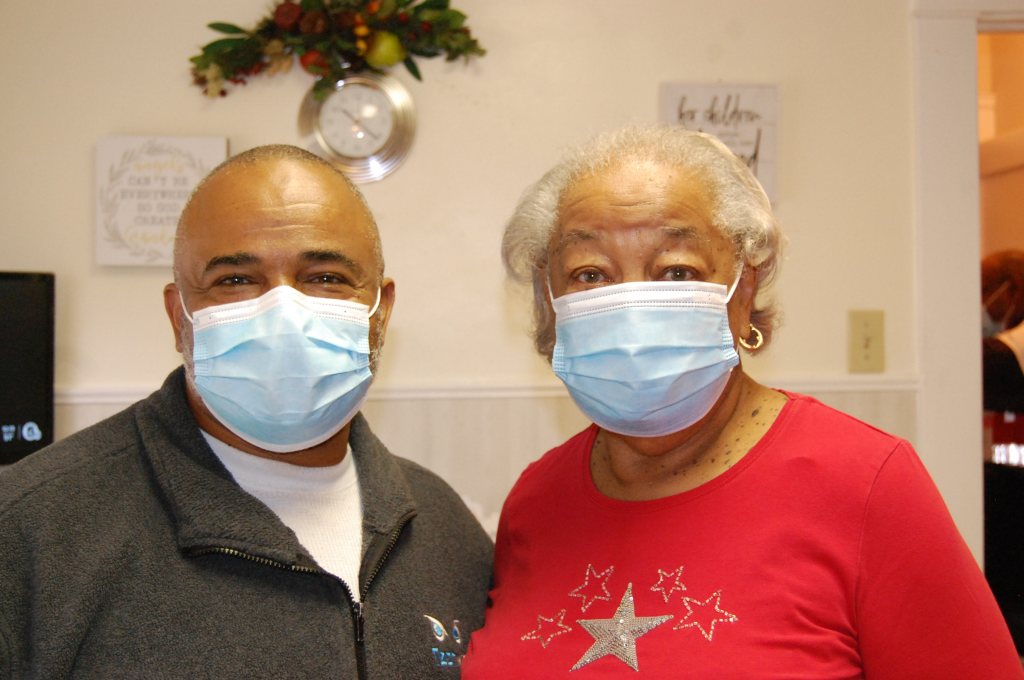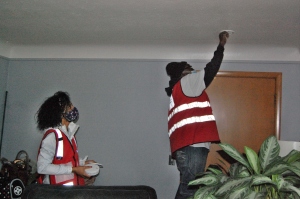By Jim McIntyre, American Red Cross
James Mays lives alone in a roomy house in Cleveland, and is extra cautious about preventing a home fire. “I’m pretty spooked out about it,” he said on the morning before Halloween, as American Red Cross volunteers Brittany Tucker and Walter Reddick installed new smoke alarms in his home.
James said he’s experienced two fires in his life. “You have to really be watchful,” he said.
James’ home was one of 22 made safer on October 30, 2021, as six Red Cross volunteers, three staff members and two Cleveland firefighters visited homes in Cleveland’s Slavic Village neighborhood. All were observing safety measures to protect themselves, each other and the residents they visited by wearing face coverings and being socially distanced when possible.
“I saw it on TV,” said Carolyn Lee, referring to a message urging people to test their alarms when they turn back their clocks to end daylight saving time on November 7. It prompted Carolyn, who has nine grandchildren and 13 great-grandchildren to call the Cleveland Division of Fire, which works closely with the Red Cross to install alarms and share home fire safety information with residents who make an appointment.
Carolyn’s son Treyfus Lee was visiting when the Red Cross arrived. The U.S. Army veteran grew up in the house and said the alarms hadn’t been changed in “quite a while.” He was told smoke alarm sensors have a 10-year life span, and that all alarms should be tested monthly.

It was a timely message, delivered a week before the time change, and a reminder to all residents: when you turn back your clocks, test your smoke alarms.
To make an appointment for a home fire safety visit and to have free smoke alarms installed in your home, visit our website. Residents of Cuyahoga, Lake, Geauga and Ashtabula Counties can also call 216-361-5535. Residents of Summit, Mahoning, Trumbull, Medina, Portage and Columbiana counties can call 330-535-2030. In Stark, Wayne, Ashland, Carroll, Holmes, Harrison and Tuscarawas Counties, residents can call 330-453-0146. In Erie, Hancock, Huron, Lorain, Putnam, Seneca, and Wyandot Counties, residents can call 419-422-9322. In Lucas, Fulton, Henry, Ottawa, Sandusky, Wood, and Monroe County, Michigan, residents can call 419-329-2900.
Photos by Dave Eadelis, American Red Cross volunteer. For more photos, visit our Flickr album.



